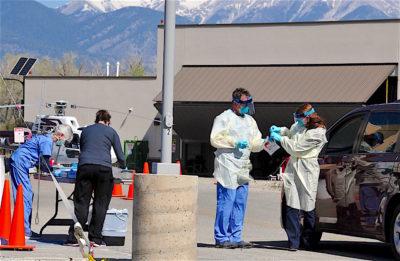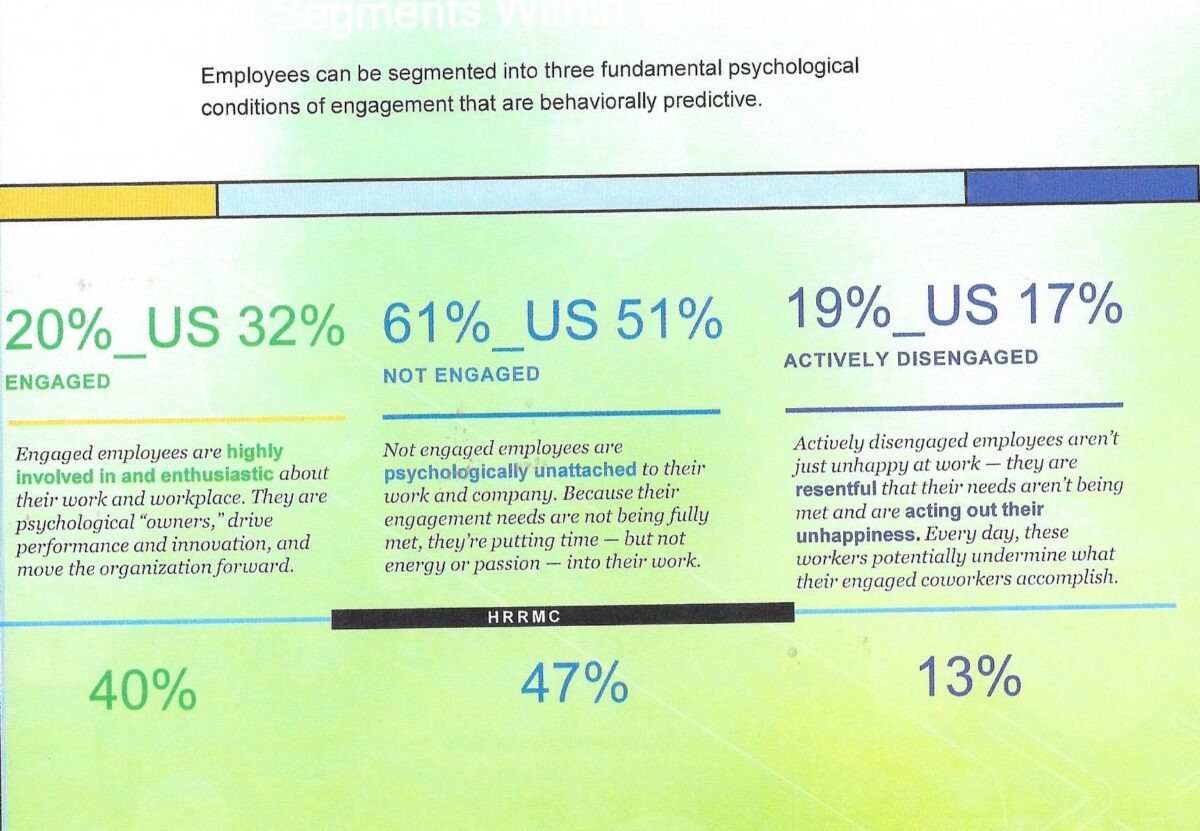The Heart of the Rockies Regional Medical Center (HRRMC) Board this week heard the results of a survey designed to measure employee engagement at its monthly session on Tuesday. Employee engagement caan be seen as a measure of how securely employees are attached to their job and work environment.

HRRMC employees process samples taken from a person at an earlier COVID-19 testing session at the hospital. Photo by Dan Smith
The employee survey, conducted between Nov. 1 and Nov.17, 2022 was reviewed by Randy Crews, HRRMC Human Resources Director since last August.
He described three levels of psychological engagement used by the national polling firm Gallup.
The survey focused on a range of employee attitudes, from highly involved and enthusiastic to those not so engaged and not psychologically attached to their work and company, down to those actively disengaged, sometimes unhappy, and possibly resentful employees.
The Engagement Index lumps employees’ attitudes (psychological conditions of engagement) into three main categories.
Engaged employees are those who are highly involved in and enthusiastic about their work and workplace; and who drive performance and innovation.
Employees who are not engaged, are described as psychologically unattached to their work and company, and because their engagement needs are not being fully met, are just putting time into work, but not their energy or passion.
Finally, actively disengaged employees who may be resentful that their needs are not being met and are ‘acting out’ their unhappiness, potentially undermining the accomplishments of their engaged coworkers. The rates globally were higher for all three categories.

A key slide from the recent HRRMC Gallop Survey of some 490 employees.
Crews explained the purpose behind doing the Gallup survey as providing two main pieces of information. “Number one, the percentage of actively engaged employees that we have and the percentage of actively disengaged employees that we have, and the second thing it provides us is the level of engagement …”
Crews explained the survey identifies four varied levels of engagement, down to the department level across a broad spectrum of businesses and industries. “And then we actually broke it down to healthcare; we selected healthcare that included Critical Access hospitals,” said Crews.
He said the results of the survey will help define objectives, among other things. For instance, working to improve the engagement of the 47 percent of employees currently listed as not engaged are described as “putting in their time”, but not putting energy or passion, into their work.
Changing the ranks of those actively disengaged, (13 percent) he said is a lot harder, though still possible.
Focusing the 47 percent of not engaged employees for improvement meant focusing on another part of the survey. It asked 12 questions surrounding four levels of engagement including those related to growth, teamwork, individual contributions, and basic needs. Those included: employees knowing what is expected of them at work, receiving recognition for work well done, seeing opportunities to learn and grow, and having development encouraged, among others.
“What it will help us do is how to know where to put our resources to, number one, improve engagement, and the purpose of trying to improve employee engagement is truly about the outcome for our patients,” added Crews. “Because we know through Gallup’s data, going back 30 or 40 years, that the higher the engagement of your staff, the higher the satisfaction of the patients and the better the outcomes.”
Earlier engagement surveys were conducted by the organization Press-Gainey, but Crews said the philosophy and foundation of the Gallup survey, “is more in line with our organization’s culture and our strategic plan.”
While employee engagement and attitudes are checked regularly, Crews said answers to the survey by up to 490 employees were broken down into categories such as feelings on pay, benefits, equipment used, and more.
“Some of those things mentioned we’re already working on,” Crews said citing comments from long-time employees that they didn’t receive a sign-on bonus as is offered for some positions now to aid recruitment.
The result: the creation of a retention bonus for employees at their annual review instead of for five or ten years of service.
While employee turnover has been a concern in the past, Crews said turnover was less than 20 percent this past year, and the last half of the year, it was less than seven percent.
The hoped-for long-term benefit is achievable excellence for HRRMC. He credits CEO Bob Morasko with being focused on the value of the employees to the organization as well as outcomes for patients.
“My goal …. is that we can take this information…and get to the point where we would be considered a world-class organization based on the level of engagement of our staff,” he said.
“My goal is 70 percent actively engaged employees … that’s considered world-class … I think we can get there”








Recent Comments